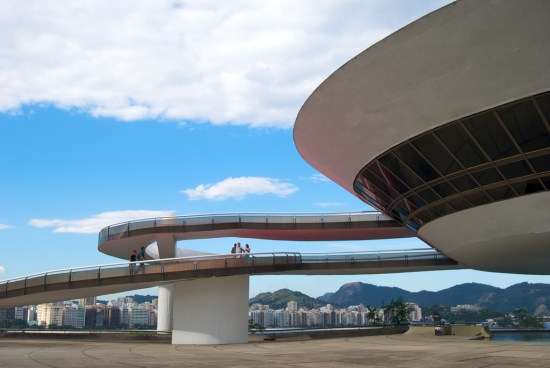Brazilian news outlets yesterday announced the death of Oscar Niemeyer, the architect whose vision helped to shape the urban landscape of the twentieth century. He died of respiratory failure in Rio de Janeiro on Wednesday aged 104.

The futuristic and curvaceous architecture of Oscar Niemeyer
Niemeyer, who was born into an affluent Brazilian family in 1907, came to international attention in the 1950s with his futuristic, curvaceous designs that he claimed were inspired by nature.
“Right angles don’t attract me,” he said. “Nor straight, hard and inflexible lines created by man.
“What attracts me are free and sensual curves. The curves we find in mountains, in the waves of the sea, in the body of the woman we love.”
He was a pioneer of modernist architecture and a proud symbol of his homeland, where his contribution to the design of the new capital city of Brasilia in the 1960s makes it such a striking spectacle.
Though this project has been dismissed by some as a utopian vision that lacks soul, Niemeyer defended it to the end of his life.
“If you go to Brasilia,” he said. You might not like it, say there’s something better, but there’s nothing just like it.”
Other landmarks in the long career of the ‘Picasso of concrete’ include large parts of the United Nations complex in New York, the Serpentine Gallery summer pavilion in Hyde Park and the headquarters of the Communist Party in Paris. He is also responsible for a host of commissions in countries as diverse as Germany, Lebanon and Portugal.
Niemeyer was awarded the gold medal from the American Institute of Architecture in 1970, the Pritzker Prize from the Hyatt Foundation in 1988 and the gold medal from the Royal Institute of British Architects (RIBA) in 1998. He continued working well into his nineties and his influence can be seen in a range of public buildings and commercial property developments in cities across the world.
Previous Post
Topshop in Talks Over US Stake Sale